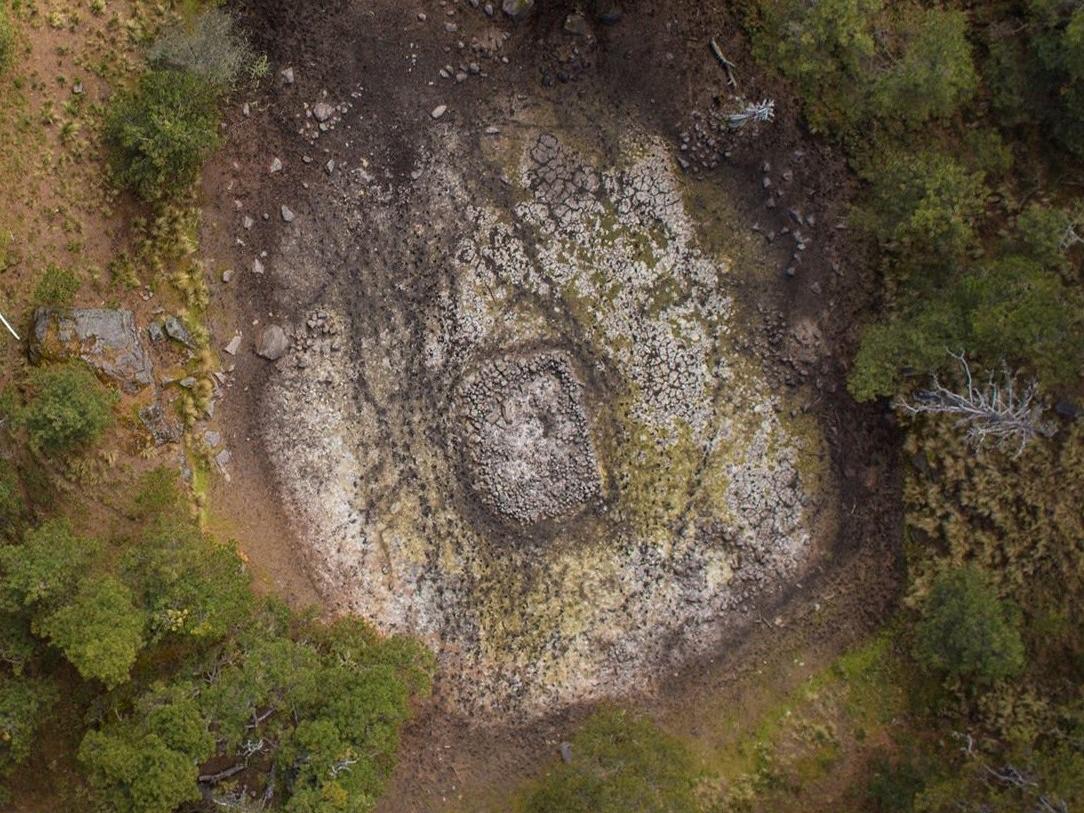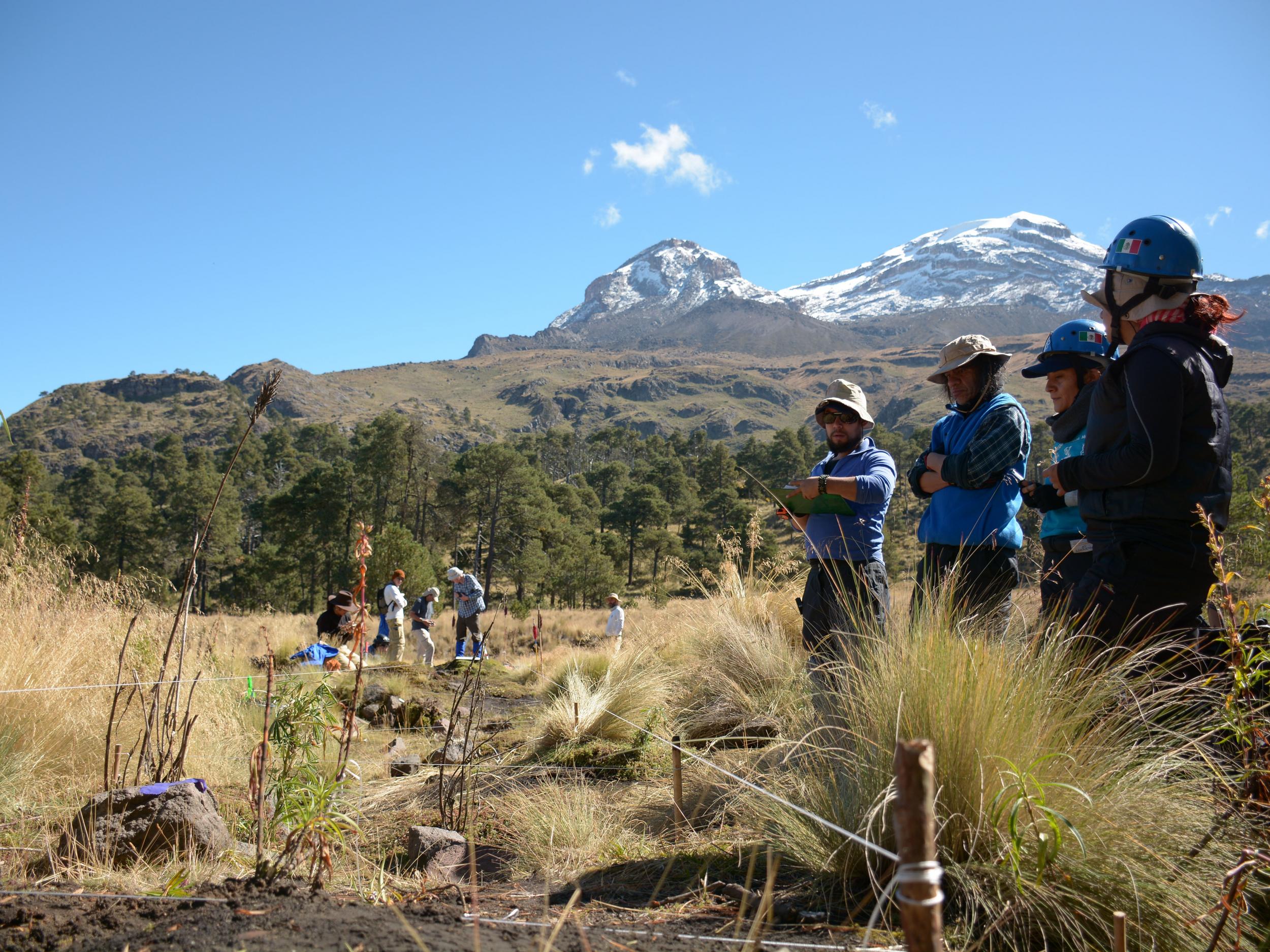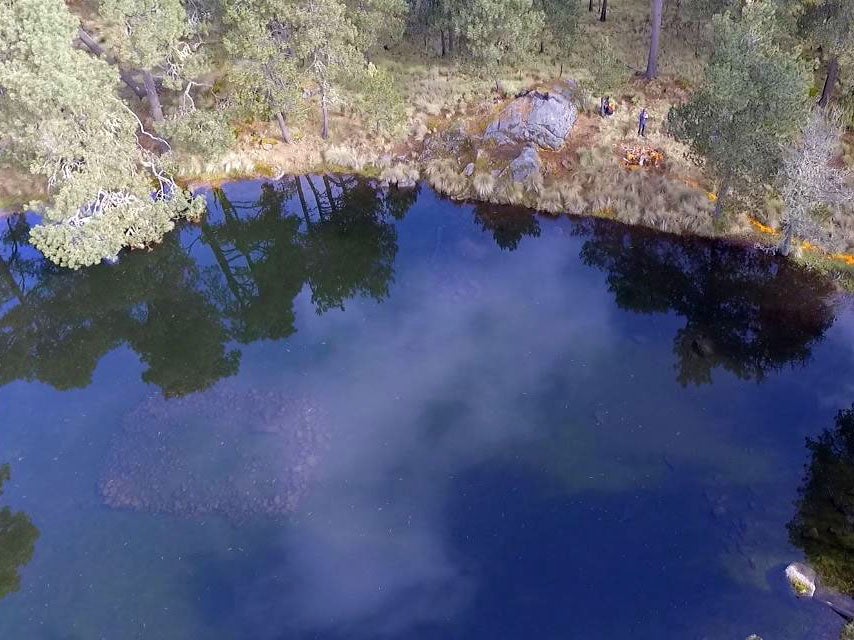Ancient Mexican structure is a ‘miniature model of the universe’, say archaeologists
Underwater shrine appears to represent the beginning of space and time in Mesoamerican mythology

Mexican archaeologists have identified a stone “tetzacualco” – or shrine – that they think could have been constructed as a “miniature model of the universe”.
The structure is located in a pond on the side of the Iztaccihuatl volcano near Mexico City, on a site termed Nahualac.
In some ancient Mesoamerican myths concerning the creation of the world, the crocodile monster Cipactli floated on the primal waters and from its body the earth and sky were created.

With the shrine placed in the middle of a pond, the archaeologists that discovered it suggested that it is a representation of this origin story for the beginning of time and space – “a miniature model of the universe”.
According to archaeologist Iris Hernández of the National Institute of Anthropology and History, who led the research, architectural elements placed in water sources in this manner appear to have been “an important part of Mesoamerican thought”.
Dr Hernández suggested that water flowing into the pond was controlled to create a visual effect that made it appear like the stone structure was “floating on the water mirror”.
A team began to excavate the site back in 2016, finding a variety of signs of human activity at Nahualac.
These signs include ceramic fragments, parts of obsidian blades and organic remains such as charcoal and the mineral schist that may have been an offering of some sort.

Nahualac consists of two main areas – the first of which is the shrine, built from stacked stones not held together with any kind of cement in pre-Hispanic times.
The second area is found 150 metres away from the shrine, and there the archaeologists found ceramic materials associated with the rain god Tlaloc.
These artefacts dated from 750-1150 AD.
The researchers think the site in its entirety represents a ritual space in which a cult of Tlaloc was based, along with worship of other deities of the water and land.
Join our commenting forum
Join thought-provoking conversations, follow other Independent readers and see their replies
Comments
Bookmark popover
Removed from bookmarks